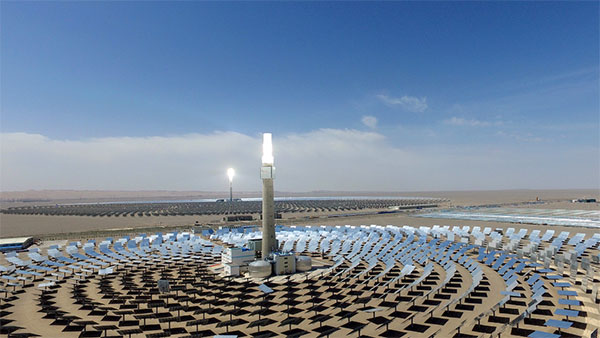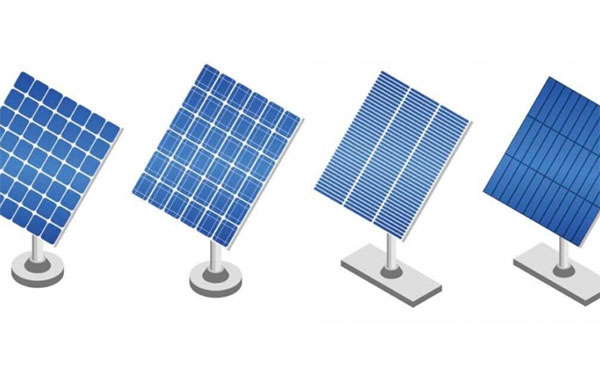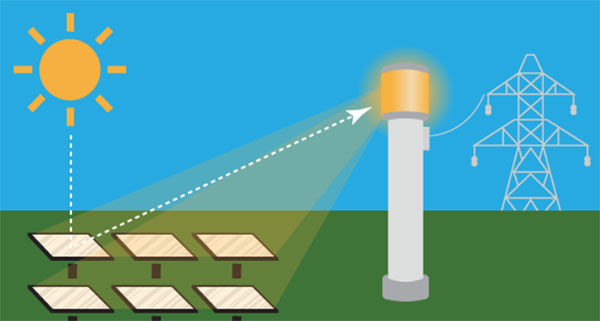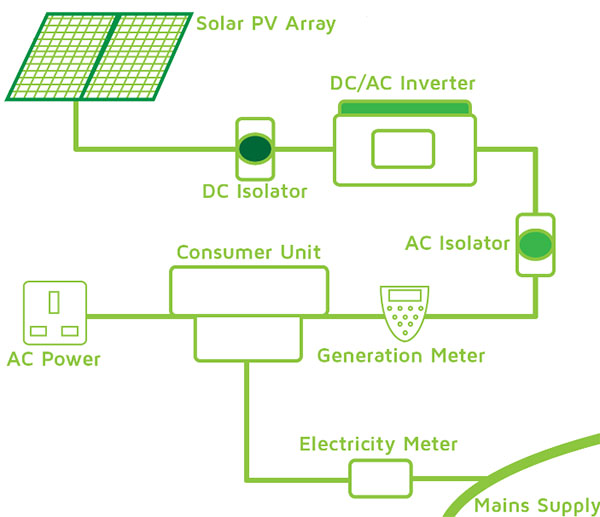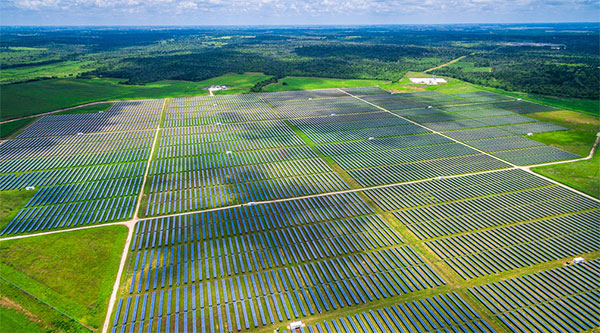Description
In 2024, the most common types of solar energy are Photovoltaic (PV) systems, Concentrated Solar Power (CSP) systems, and Solar Thermal energy, with emerging technologies like Perovskite solar cells and Building-Integrated Photovoltaics (BIPV) also gaining traction.
Photovoltaic (PV) Solar Power Systems
Photovoltaic (PV) Solar Power Systems are at the forefront of harnessing solar energy. These systems convert sunlight directly into electricity using semiconductor materials such as silicon. The versatility and scalability of PV systems make them suitable for a wide range of applications, from small residential setups to large commercial and utility-scale installations.
Advances in PV Technology
Technological advancements in PV systems focus on increasing efficiency and reducing manufacturing costs. Manufacturers are experimenting with new materials like perovskites and multi-junction solar cells to achieve higher efficiencies. For instance, the latest PV cells have seen efficiency improvements, reaching upwards of 22-24% under standard test conditions. Enhanced techniques in manufacturing have also enabled thinner and more flexible solar panels, broadening their potential applications.
Residential and Commercial Applications
PV systems offer significant benefits for both residential and commercial users. In residential settings, solar panels typically range from 5 kW to 10 kW in power output, significantly reducing electricity bills and dependence on the grid. For commercial buildings, solar installations can be larger, often between 100 kW to 500 kW, catering to higher energy demands. They not only cut energy costs but also contribute to corporate sustainability goals. In both scenarios, factors like roof size, orientation, and local climate play crucial roles in determining the system's overall efficiency and output. The integration of solar with smart grid technology and battery storage systems is also gaining momentum, enhancing the reliability and effectiveness of solar power in diverse settings.
Efficiency and Cost Trends
The cost of PV systems has plummeted over the past decade, making solar a more accessible and affordable energy source. The average cost of residential solar installations can range from $2.50 to $3.50 per watt, depending on the system's size, quality of materials, and installation complexities. Meanwhile, commercial installations might benefit from economies of scale, potentially lowering the cost per watt. In terms of efficiency, solar panel manufacturers continuously innovate to extract more power from the same sunlight. The average lifespan of these panels is about 25-30 years, though some can last longer depending on the quality and environmental conditions. While initial investment in solar PV systems might seem high, the long-term savings in electricity bills and low maintenance costs often offset the initial expenses, making them an economically sound choice. The inclusion of specific details like costs, efficiency percentages, and power outputs gives a concrete understanding of the current state of PV Solar Power Systems. The inclusion of hyperlinks to relevant topics provides additional depth and context for those seeking more detailed information.
Concentrated Solar Power (CSP) Systems
Concentrated Solar Power (CSP) Systems use mirrors or lenses to concentrate a large area of sunlight, or solar thermal energy, onto a small area. Electrical power generates by converting the concentrated light into heat, which drives a heat engine (usually a steam turbine) connected to an electrical power generator.
Latest Developments in CSP Technology
Recent advancements in CSP technology focus on enhancing efficiency and storage capabilities. For instance, new designs in tower systems and parabolic troughs enable operations at higher temperatures, increasing overall efficiency. Thermal energy storage systems using molten salts have also evolved, allowing CSP plants to store excess heat and generate electricity even when the sun is not shining. This feature addresses the intermittency issue commonly associated with solar power. Developments in CSP materials, like advanced phase-change materials for thermal storage and innovative mirror designs that resist corrosion and enhance reflectivity, contribute to longer lifespan and lower maintenance costs. CSP plants now can achieve efficiencies between 20-25%, with potential for further improvements as technology advances.
Comparison with PV Systems
CSP systems differ from Photovoltaic (PV) systems primarily in their method of converting sunlight into electricity. While PV systems convert light directly into electricity using the photovoltaic effect, CSP systems first convert the sun's energy into heat, which then generates electricity. CSP systems typically require larger land areas compared to PV and are more suited for utility-scale power generation. They have higher initial costs but offer advantages in storage and efficiency at large scales. CSP plants are better suited for regions with high direct solar irradiance and are less effective in cloudy or highly diffused light conditions, unlike PV systems that can still operate under diffused light.
Key Projects and Usage Worldwide
Significant CSP projects reflect the technology's growing global footprint. The Noor Complex Solar Power Plant in Morocco, one of the world's largest CSP plants, exemplifies the scale and ambition of current CSP projects. It has a planned total capacity of 580 MW and occupies thousands of acres. Spain and the United States lead in the number of operational CSP plants. The Ivanpah Solar Power Facility in California, USA, with a capacity of 392 MW, harnesses power using 173,500 heliostats each with two mirrors, focusing solar energy on receivers located on centralized solar power towers. China and India are also investing heavily in CSP technology. The Delingha 50MW Tower CSP Plant in China and the Bhadla Solar Park in India represent Asia's growing commitment to CSP technology as part of their renewable energy portfolios. This content delves into CSP systems, highlighting advancements, differences with PV systems, and notable global projects. It provides a detailed understanding of current trends, efficiencies, and the geographical spread of CSP technology.
Solar Thermal Energy
Solar Thermal Energy involves capturing heat from the sun and using it for heating or even cooling purposes. Unlike Photovoltaic systems that convert sunlight directly into electricity, solar thermal devices concentrate solar radiation to heat a fluid (often water or air), which then transfers this heat for various applications.
Innovations in Solar Heating and Cooling
Recent innovations in solar thermal technologies have made significant strides, especially in the efficiency and adaptability of these systems. Enhanced solar collector designs, such as evacuated tube collectors and flat-plate collectors, provide higher efficiency in heat absorption and retention. These collectors now can operate effectively even in less sunny conditions, making them more versatile. Solar cooling, an emerging field, uses solar thermal energy to power absorption or adsorption refrigeration systems. This innovation not only provides a sustainable way to reduce air conditioning costs but also helps in reducing peak electricity loads during hot summer days.
Domestic and Industrial Applications
In the domestic sector, solar thermal systems commonly serve for water heating purposes. A typical residential solar water heater reduces the need for conventional water heating by about 50-70%. The simplicity and low maintenance of these systems add to their appeal for household use. In the industrial sector, solar thermal technology finds applications in not just heating and cooling, but also in processes like desalination, drying, and pasteurization. For example, solar thermal systems can heat water or generate steam necessary for various industrial processes, significantly cutting down the fossil fuel dependency and reducing greenhouse gas emissions.
Integration with Other Renewable Energy Systems
Integrating solar thermal systems with other renewable energy sources like wind, biomass, or photovoltaic systems leads to more efficient, reliable, and cost-effective energy solutions. For instance, combining solar thermal setups with biomass boilers can ensure a steady supply of heating and hot water, especially in regions with less consistent sunlight. Incorporating solar thermal energy into district heating networks or with geothermal heat pumps also maximizes the use of renewable resources, enhancing the overall energy efficiency of the system. This integration proves particularly effective in larger buildings or residential complexes where the demand for heating and cooling is substantial. The detailed exploration of solar thermal energy here covers recent technological innovations, its varied applications in domestic and industrial sectors, and how effectively it integrates with other renewable energy systems, providing a comprehensive look into this sustainable technology.
Emerging Solar Technologies
Emerging solar technologies are revolutionizing the way we think about and utilize solar energy. These technologies, ranging from Perovskite solar cells to Building-Integrated Photovoltaics (BIPV), are setting new benchmarks in efficiency, aesthetics, and flexibility, addressing many limitations of traditional solar panels.
Perovskite Solar Cells
Perovskite solar cells have gained significant attention due to their high efficiency and lower production costs. These cells utilize a perovskite-structured compound that is a highly efficient light absorber and easy to fabricate. The most notable advantage of perovskite solar cells is their ability to achieve efficiencies over 25%, rivaling and potentially surpassing traditional silicon-based cells. Additionally, perovskite cells can be produced using simple printing processes, significantly reducing manufacturing complexities and costs. They also offer flexibility in application — unlike rigid traditional panels, perovskite can be used in a variety of settings, including on curved surfaces, lightweight portable devices, and even as transparent cells for windows.
Organic Photovoltaic Cells (OPVs)
Organic Photovoltaic Cells (OPVs) represent another promising solar technology. Made from carbon-based materials, OPVs are lightweight, flexible, and potentially cheaper to produce than conventional solar cells. One of the key advantages of OPVs is their versatility in design and color, making them aesthetically pleasing and suitable for integration into buildings and consumer electronics. Despite these benefits, OPVs typically have lower efficiency levels, currently peaking around 15%. Their lifespan is also shorter compared to silicon-based panels. However, ongoing research is focusing on enhancing the stability and efficiency of OPVs, aiming to make them more commercially viable.
Solar Skins and Building-Integrated Photovoltaics (BIPV)
Building-Integrated Photovoltaics (BIPV) and Solar skins are innovative applications of solar technology focusing on aesthetics and dual functionality. Solar skins involve the integration of thin photovoltaic layers onto surfaces like building facades, car rooftops, or even electronic devices, providing an unobtrusive and attractive way to generate solar energy. BIPV takes this a step further by integrating photovoltaics into the building materials themselves, such as in glass, roofs, or walls. This integration not only generates power but also replaces conventional building materials, potentially reducing the overall costs and environmental impact. The efficiency of BIPV systems can vary based on the technology used but generally lies within the range of traditional PV systems. However, the added aesthetic value and architectural integration can outweigh the slightly higher cost or lower efficiency for many users. These emerging solar technologies are not just expanding the applications of solar energy but are also pushing the boundaries of efficiency, design, and sustainability. Their development and eventual widespread adoption hold the key to a more versatile and aesthetically pleasing solar energy future.
